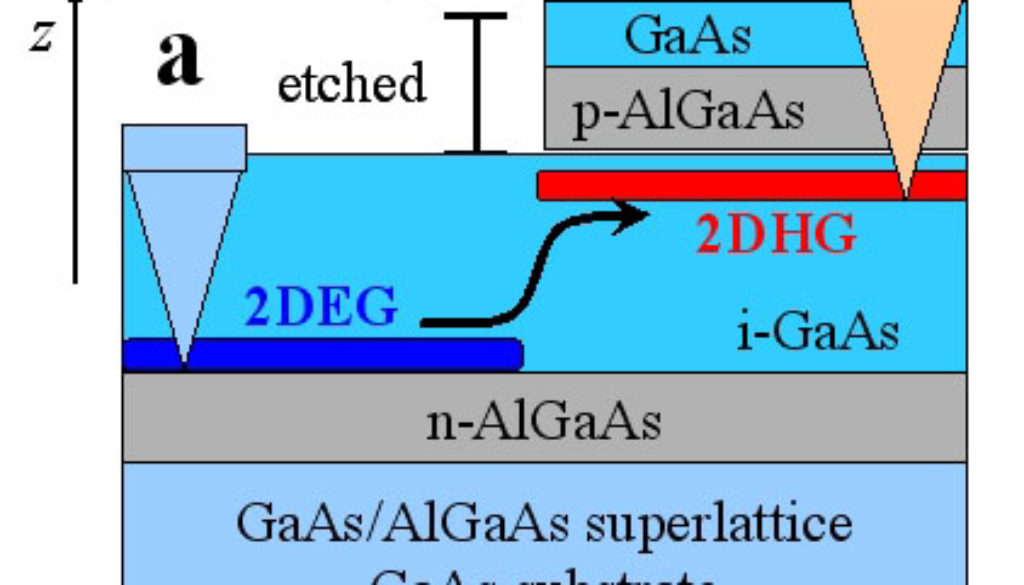Global Breakthroughs: International Physics Team Measures New Spintronic Effect in Semiconductors
An international team of physicists has announced discovery of a new spintronic effect in semiconductor chips, the intrinsic spin Hall effect, which puts a new twist on future technology and the possibility for novel circuits with low energy consumption.
The team includes physicists Dr. Jörg Wunderlich and Dr. Bernd Kaestner from the Hitachi Cambridge Laboratory, U.K.; Professor Tomás Jungwirth from the Institute of Physics of the Academy of Sciences of the Czech Republic and the University of Nottingham, U.K.; and Professor Jairo Sinova from Texas A&M University, U.S.A.
In a normal Hall effect, a voltage is created perpendicular to an electric current as it flows through a conductor in a magnetic field. The magnetic field deflects the moving charges to the sides of the conductor, resulting in an observable Hall voltage.
A different type of Hall phenomenon, the spin Hall effect, was first predicted in 1971. Here the moving electrons, which carry with them a tiny magnet called the “spin,” collide with impurities and deflect to the right or left, depending on the orientation of their spin. These collisions generate opposing magnetizations at the conductor’s edges.
Despite its intriguing ramifications, the theory disappeared into virtual obscurity until 1999, when it was rediscovered and further elaborated. Four years later, two independent teams, one including Sinova and Jungwirth, proposed a novel mechanism called the “intrinsic” spin Hall effect in which similar magnetization occurs without the need for collisions.
The prediction touched off a theoretical firestorm, resulting in more than 50 articles arguing for and against the possibility. As the heated debate raged on, Wunderlich and Kaestner developed a new type of device to measure magnetization at each side of a high-mobility, ultra-thin conducting layer embedded within a semiconductor chip using built-in light-emitting diodes.
Armed with this novel tool, Wunderlich and Kaestner teamed with Jungwirth and Sinova to observe the spin Hall effect. Their findings will be featured the February issue of “Physics Today” along with an independent and parallel observation of the effect in conventional bulk semiconductors.
Team members say the more than 10 times larger signal detected in the Hitachi device can be attributed to the special layered design of the semiconductor chip that yielded operation in a regime close to the intrinsic spin Hall effect.
“They are both beautiful experiments, and one of the most remarkable aspects is that they seem to be exploring opposite regimes,” Sinova adds.
The possibility of generating magnetization without circulating currents has great implications in many areas, most notably the design of information processing and storage devices.
“Obviously we are only at the beginning of this journey of discovery,” Sinova explains. “As you gather more facts, the truth tends to reveal itself. That’s the fun of science. We’re seeking to know, and we’re learning in the process.”
For a full description of the work please see:
http://arxiv.org/abs/cond-mat/0410295
[to be published in February in “Physical Review Letters,” vol. 94 (2005)]
-aTm-
Contact: Shana K. Hutchins, (979) 862-1237 or shutchins@science.tamu.edu or or Dr. Jairo Sinova, (979) 845-4179 or sinova@physics.tamu.edu
The post Global Breakthroughs: International Physics Team Measures New Spintronic Effect in Semiconductors appeared first on Texas A&M College of Science.
